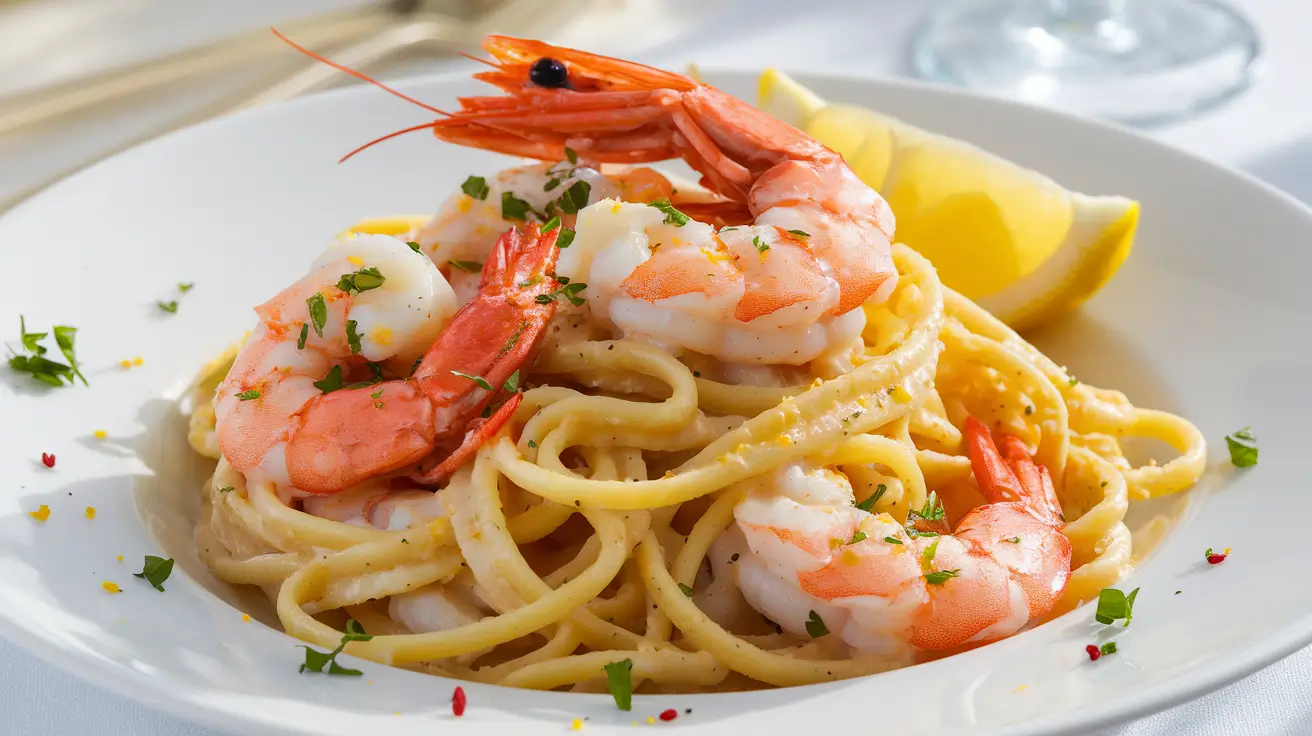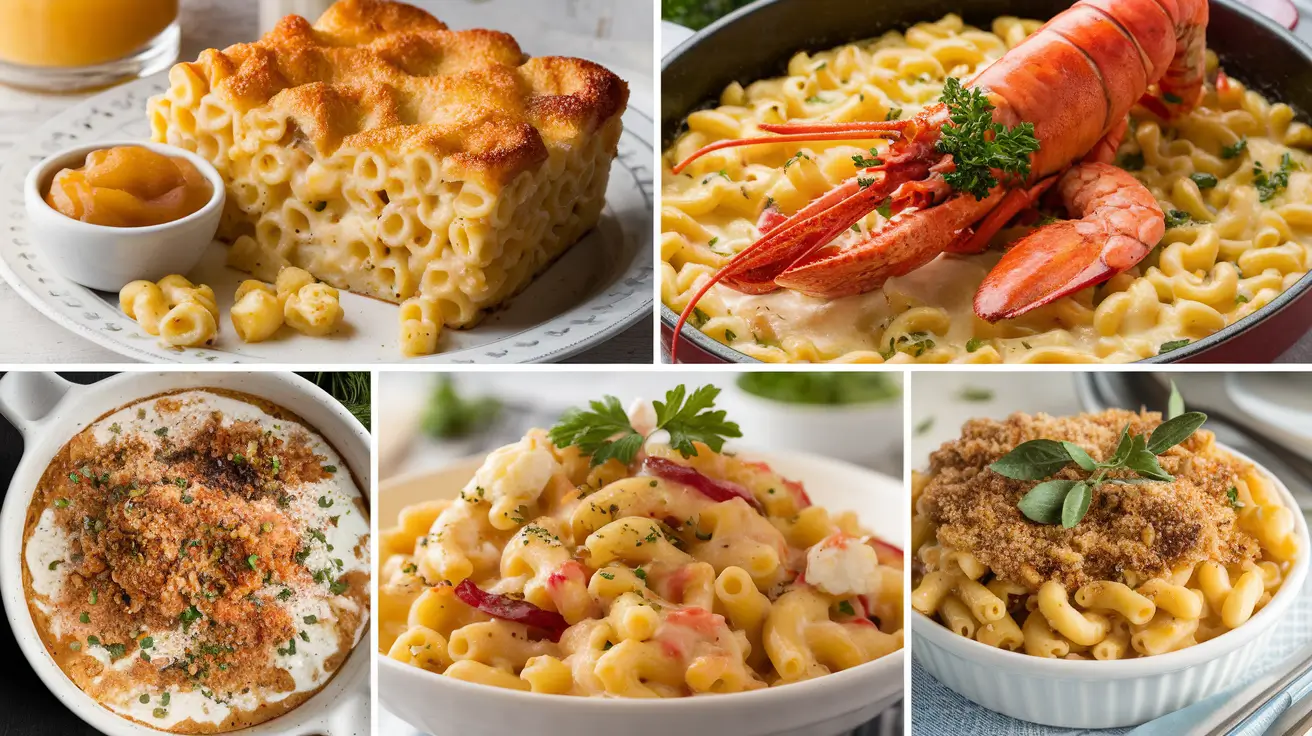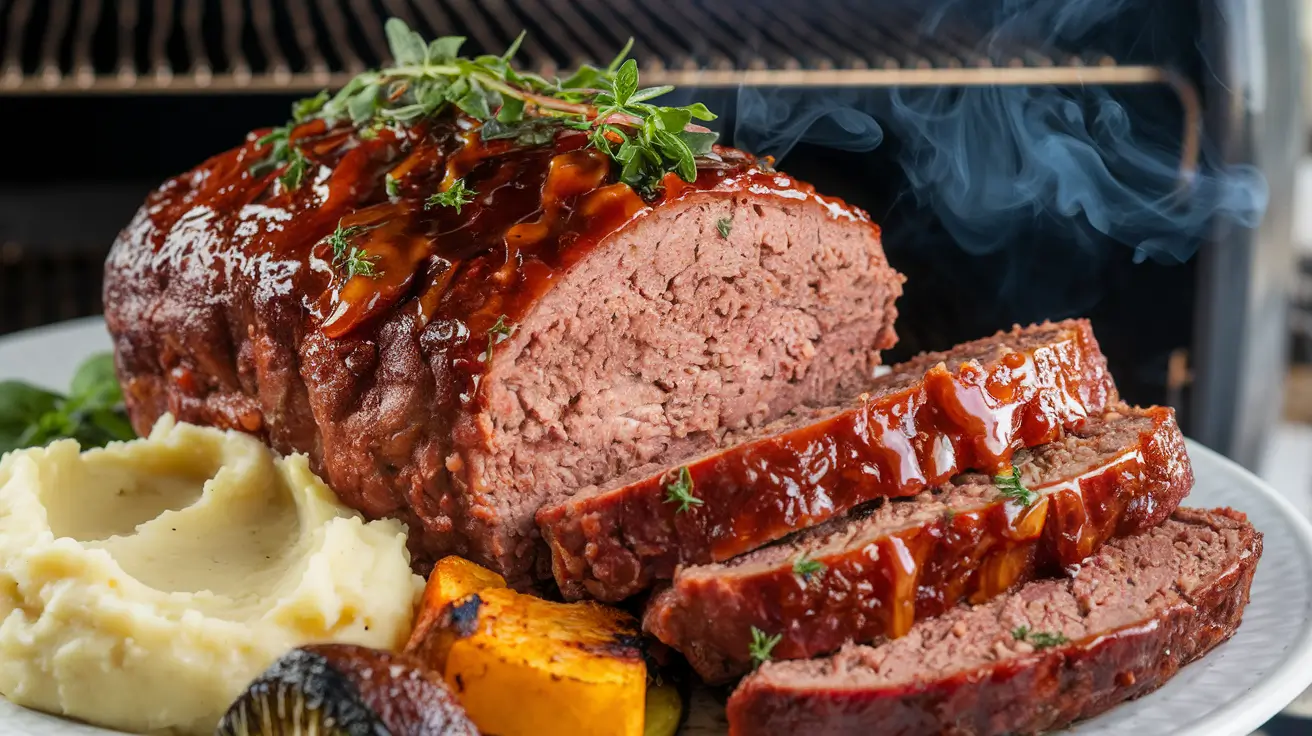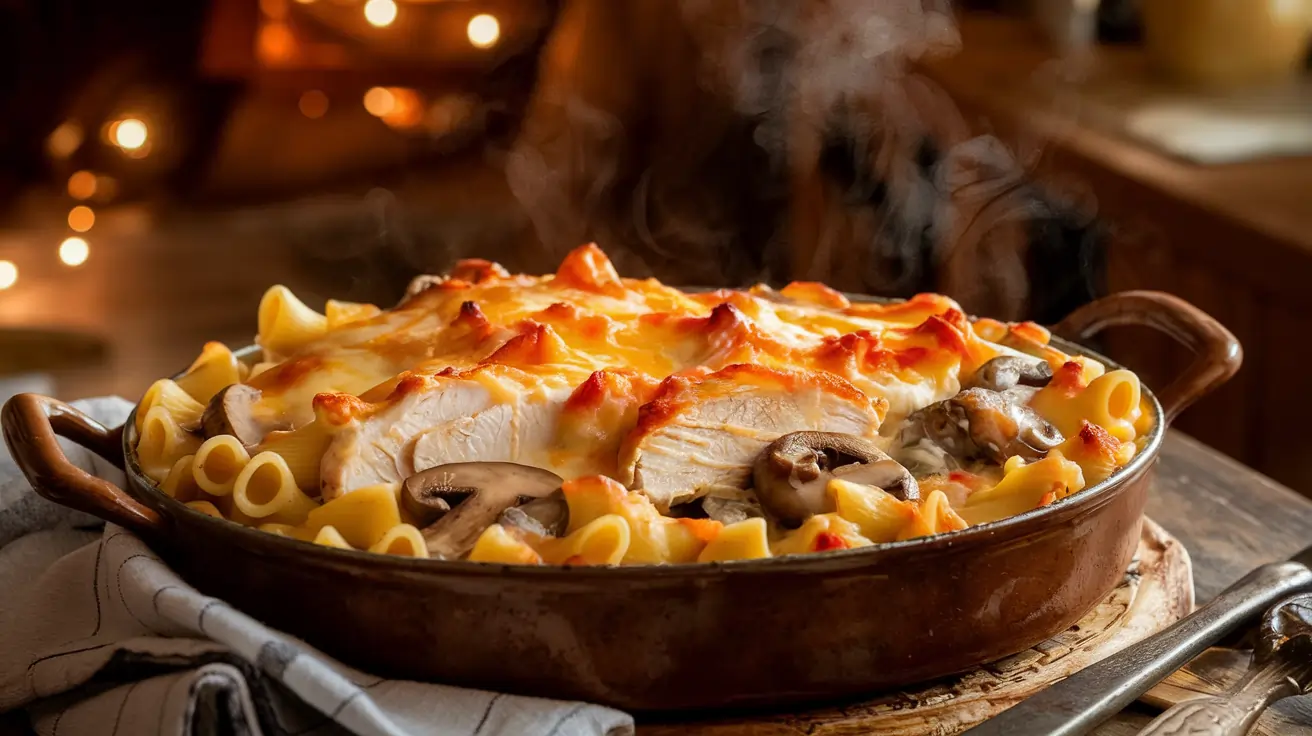Prawn Scampi Pasta: A Delightful Fusion of Italian and American Cuisine

Introduction
Welcome, food enthusiasts and pasta lovers! Today, we’re diving deep into the world of prawn scampi pasta, a dish that perfectly marries the succulence of prawns with the comforting embrace of pasta. This blog post will take you on a culinary journey, exploring the origins of this beloved dish, its key ingredients, step-by-step preparation, exciting variations, and expert tips to elevate your cooking game. Whether you’re a seasoned chef or a curious beginner, there’s something here for everyone. So, let’s roll up our sleeves and get ready to create a meal that’s sure to impress!
The Origins of Prawn Scampi Pasta
Before we dive into the cooking, let’s take a moment to appreciate the rich history behind prawn scampi pasta. This dish is a fascinating fusion of Italian and American culinary traditions, with a story that spans continents and generations.
Italian Roots
The term “scampi” originally refers to langoustines, also known as Norway lobsters, which are small, lobster-like crustaceans popular in Italian cuisine. In Italy, “scampi” are typically prepared by sautéing them in olive oil, garlic, and white wine – a simple yet flavorful preparation that allows the delicate taste of the seafood to shine.
American Adaptation
When Italian immigrants brought their culinary traditions to the United States in the early 20th century, they faced a challenge: langoustines were not readily available in their new home. Resourceful as ever, they adapted the dish using shrimp (or prawns), which were abundant and more affordable.
The preparation method remained similar to the Italian original, but over time, American chefs began to experiment with the recipe. They added butter to create a richer sauce, incorporated lemon for brightness, and often served the dish over pasta – a combination that wasn’t common in Italy but quickly became popular in the United States.
The Birth of Prawn Scampi Pasta
The addition of pasta to the shrimp scampi dish was a natural evolution in America, where pasta dishes were becoming increasingly popular. This fusion created a more substantial meal that could serve as a main course rather than just an appetizer.
By the 1960s and 1970s, shrimp scampi pasta had become a staple in Italian-American restaurants across the United States. The dish’s popularity soon spread beyond the Italian-American community, becoming a beloved part of American cuisine.
Global Influence
Today, prawn scampi pasta has gained international recognition. While it may not be considered an authentic Italian dish, it represents the beautiful way in which cuisines evolve and adapt as they travel across cultures. In the UK and other parts of the world, you might find it made with actual scampi (langoustines), bringing the dish full circle to its Italian roots.
Key Ingredients: The Stars of Prawn Scampi Pasta
Now that we’ve explored the fascinating history of prawn scampi pasta, let’s dive into the key ingredients that make this dish so irresistible. Understanding each component will help you create a more flavorful and authentic dish.
1. Prawns (or Shrimp)
The star of the show, prawns bring a sweet, delicate flavor and a satisfying texture to the dish. While the terms “prawn” and “shrimp” are often used interchangeably, they are actually different creatures. For this dish, either will work beautifully.
- Size: Opt for medium to large prawns or shrimp. They should be substantial enough to stand up to the pasta without getting lost in the dish.
- Fresh vs. Frozen: While fresh is always wonderful if you can get it, high-quality frozen prawns can work just as well. Just be sure to thaw them properly and pat them dry before cooking.
- Preparation: Whether you leave the tails on is a matter of personal preference. Some chefs prefer to leave them on for presentation, while others remove them for easier eating.
2. Pasta
The pasta serves as the perfect vehicle for the flavorful sauce and succulent prawns.
- Type: Traditionally, long pasta shapes like linguine or spaghetti are used, but you can experiment with other types like fettuccine or even shorter shapes like penne.
- Quality: Use a good quality dried pasta for the best texture and flavor absorption.
- Cooking: Always cook the pasta al dente, as it will continue to cook slightly when tossed with the hot sauce.
3. Garlic
Garlic is crucial in creating the aromatic base of the dish.
- Fresh is Best: Always use fresh garlic cloves rather than pre-minced garlic for the most vibrant flavor.
- Quantity: Don’t be shy with the garlic – 4 to 6 cloves for 4 servings is a good starting point, but adjust according to your taste.
4. Olive Oil and Butter
The combination of olive oil and butter creates a rich, flavorful base for the sauce.
- Olive Oil: Use a good quality extra virgin olive oil for the best flavor.
- Butter: Unsalted butter is preferable, as it allows you to control the saltiness of the dish.
5. White Wine
White wine adds depth and acidity to the sauce, balancing the richness of the butter and olive oil.
- Type: A dry white wine like Pinot Grigio or Sauvignon Blanc works well. Avoid sweet wines, as they can overpower the delicate flavors of the dish.
- Quality: Use a wine that you would enjoy drinking. While it doesn’t need to be expensive, it should be of good quality.
6. Lemon
Lemon juice adds brightness and helps to cut through the richness of the sauce.
- Fresh is Key: Always use freshly squeezed lemon juice rather than bottled for the best flavor.
- Zest: Don’t forget the lemon zest! It adds an extra layer of citrusy aroma to the dish.
7. Red Pepper Flakes
A pinch of red pepper flakes adds a subtle heat that complements the other flavors without overpowering them.
8. Fresh Parsley
Parsley adds a fresh, herbaceous note and a pop of color to the finished dish.
- Italian Flat-Leaf: This variety is preferred for its more robust flavor compared to curly parsley.
9. Parmesan Cheese (Optional)
While not traditional, many recipes include a sprinkle of grated Parmesan cheese for added depth and umami.
Understanding these key ingredients and their roles in the dish will help you create a more balanced and flavorful prawn scampi pasta. In the next section, we’ll walk through the step-by-step process of bringing these ingredients together into a delicious meal.
Step-by-Step Preparation: Crafting the Perfect Prawn Scampi Pasta
Now that we’re familiar with the key ingredients, let’s walk through the process of creating this delightful dish. Follow these steps, and you’ll have a restaurant-quality prawn scampi pasta on your table in no time!
Ingredients (Serves 4):
- 1 pound (450g) large prawns or shrimp, peeled and deveined
- 1 pound (450g) linguine or spaghetti
- 6 cloves garlic, minced
- 1/4 cup (60ml) extra virgin olive oil
- 1/4 cup (60g) unsalted butter
- 1/3 cup (80ml) dry white wine
- Juice and zest of 1 lemon
- 1/4 teaspoon red pepper flakes (adjust to taste)
- 1/4 cup fresh parsley, chopped
- Salt and freshly ground black pepper to taste
- Optional: 1/4 cup grated Parmesan cheese
Instructions:
- Prepare the Prawns
- If using frozen prawns, thaw them completely and pat dry with paper towels.
- Season the prawns with salt and pepper.
- Cook the Pasta
- Bring a large pot of salted water to a boil.
- Add the pasta and cook until al dente, following the package instructions.
- Reserve 1 cup of pasta cooking water before draining.
- Start the Sauce
- While the pasta is cooking, heat the olive oil and 2 tablespoons of butter in a large skillet over medium heat.
- Add the minced garlic and red pepper flakes. Sauté for about 1 minute until fragrant, being careful not to brown the garlic.
- Cook the Prawns
- Add the prawns to the skillet in a single layer.
- Cook for 1-2 minutes on each side until they turn pink and are just cooked through.
- Remove the prawns from the skillet and set aside.
- Finish the Sauce
- In the same skillet, add the white wine, lemon juice, and lemon zest.
- Simmer for 2-3 minutes to reduce the liquid slightly.
- Add the remaining 2 tablespoons of butter and stir until melted.
- Combine and Toss
- Add the cooked pasta to the skillet with the sauce.
- Toss to coat the pasta, adding some of the reserved pasta water if needed to loosen the sauce.
- Return the prawns to the skillet and add the chopped parsley.
- Toss everything together gently to combine and heat through.
- Serve
- Taste and adjust seasoning with salt and pepper as needed.
- Serve immediately, garnished with extra parsley and lemon wedges.
- If desired, sprinkle with grated Parmesan cheese.
Pro Tips for Perfect Prawn Scampi Pasta:
- Don’t Overcook the Prawns: Prawns cook very quickly and can become tough if overcooked. They’re done as soon as they turn pink and curl slightly.
- Al Dente Pasta: Cooking the pasta al dente is crucial, as it will continue to cook slightly when tossed with the hot sauce.
- Reserve Pasta Water: The starchy pasta water is perfect for adjusting the consistency of your sauce. Add it a little at a time until you reach your desired consistency.
- Wine Selection: If you prefer not to use wine, you can substitute with chicken or vegetable broth, adding a squeeze of extra lemon juice for acidity.
- Garlic Infusion: For a milder garlic flavor, consider using whole garlic cloves to infuse the oil, then removing them before adding the prawns.
- Finishing Touch: A drizzle of high-quality extra virgin olive oil just before serving can add an extra layer of flavor and richness.
By following these steps and tips, you’ll create a prawn scampi pasta that’s bursting with flavor, perfectly cooked, and sure to impress. In the next section, we’ll explore some exciting variations to keep this dish fresh and exciting every time you make it.
Exciting Variations: Putting a Twist on Prawn Scampi Pasta
One of the joys of cooking is the ability to experiment and make a dish your own. Prawn scampi pasta is wonderfully versatile, lending itself to numerous variations. Here are some exciting ways to put your own spin on this classic dish:
1. Seafood Medley Scampi Pasta
Why stop at prawns? Create a seafood lover’s delight by incorporating a mix of seafood.
- Additional Ingredients: Add scallops, chunks of firm white fish, or even small pieces of lobster tail.
- Cooking Tip: Remember that different seafood may have different cooking times. Add them to the pan in order of cooking time, with the longest-cooking items first.
2. Roasted Cherry Tomato Scampi Pasta
Add a burst of sweetness and color with roasted cherry tomatoes.
- Method: Toss cherry tomatoes with olive oil, salt, and pepper. Roast in a 400°F (200°C) oven for about 15 minutes until blistered.
- Assembly: Add the roasted tomatoes to the pasta along with the prawns for a delightful contrast of flavors and textures.
3. Creamy Prawn Scampi Pasta
For those who love a richer sauce, try a creamy version.
- Additional Ingredients: Add 1/2 cup of heavy cream to the sauce after the wine has reduced.
- Finishing Touch: Stir in 1/4 cup of grated Parmesan cheese just before serving for extra richness and depth.
4. Spinach and Prawn Scampi Pasta
Incorporate some greens for added nutrition and a pop of color.
- Method: Add a few handfuls of baby spinach to the skillet just before tossing with the pasta. The residual heat will wilt the spinach perfectly.
5. Whole Wheat Prawn Scampi Pasta
For a nuttier flavor and added fiber, try using whole wheat pasta.
- Cooking Tip: Whole wheat pasta may require a slightly longer cooking time. Be sure to check the package instructions.
6. Lemon-Caper Prawn Scampi Pasta
Amp up the tangy flavors with the addition of capers.
- Method: Add 2 tablespoons of drained capers to the sauce along with the lemon juice and zest.
- Pro Tip: If you’re a fan of bold flavors, try adding a teaspoon of anchovy paste to the sauce for an extra umami boost.
7. Spicy Arrabbiata Prawn Scampi Pasta
For those who like it hot, give your scampi pasta an arrabbiata twist.
- Additional Ingredients: Increase the red pepper flakes to 1 teaspoon (or to taste) and add 1/2 cup of tomato passata to the sauce.
- Garnish: Finish with a sprinkle of fresh basil instead of parsley.
8. Grilled Prawn Scampi Pasta
Take advantage of grilling season with this smoky variation.
- Method: Marinate the prawns in olive oil, garlic, and lemon juice, then grill them instead of pan-frying.
- Assembly: Toss the grilled prawns with the pasta and a simple garlic and olive oil sauce.
9. Gluten-Free Prawn Scampi Pasta
Make this dish accessible for those with gluten sensitivities.
- Pasta Choice: Use your favorite gluten-free pasta. Rice pasta or chickpea pasta work well.
- Cooking Tip: Be extra careful not to overcook gluten-free pasta as it can become mushy quickly.
10. Vegetable-Packed Prawn Scampi Pasta
Boost the vegetable content for a more balanced meal.
- Additional Ingredients: Sauté sliced zucchini, bell peppers, or asparagus along with the garlic before adding the prawns.
Remember, these variations are just starting points. Feel free to mix and match ideas or come up with your own unique twists. The key is to maintain the essence of the dish – the garlicky, lemony sauce and the succulent prawns – while adding your personal touch.
Serving Suggestions and Wine Pairings
Now that you’ve mastered the art of prawn scampi pasta and explored some exciting variations, let’s talk about how to serve this delightful dish and what to pair it with for a truly memorable meal.
Serving Suggestions
- Presentation: Serve your prawn scampi pasta in wide, shallow bowls to showcase the colors and textures of the dish. A few whole prawns on top and a sprinkle of fresh herbs make for an appetizing presentation.
- Garnishes: Offer lemon wedges on the side for those who like an extra citrusy kick. A small dish of extra red pepper flakes allows guests to adjust the heat to their liking.
- Accompaniments: While prawn scampi pasta is a complete meal on its own, you might consider serving it with:
- A simple green salad with a light vinaigrette to balance the richness of the pasta
- Garlic bread or a crusty baguette to soak up any extra sauce
- Steamed or grilled vegetables for added nutrition and color on the plate
- Temperature: Serve prawn scampi pasta immediately while it’s hot. The flavors are at their best when the dish is freshly made.
- Family-Style Option: For a more casual, family-style meal, consider serving the pasta in a large, beautiful bowl in the center of the table, allowing guests to help themselves.
Wine Pairings
The right wine can elevate your prawn scampi pasta from delicious to extraordinary. Here are some wine pairing suggestions to complement the flavors of the dish:
- Pinot Grigio: This classic Italian white wine is a natural pairing for prawn scampi pasta. Its light, crisp character and subtle citrus notes complement the lemon in the dish without overpowering the delicate flavors of the prawns.
- Sauvignon Blanc: With its herbaceous notes and bright acidity, a Sauvignon Blanc can beautifully enhance the garlic and lemon flavors in the pasta.
- Vermentino: This lesser-known Italian white wine is an excellent choice. Its mineral notes and slight salinity make it a perfect match for seafood dishes.
- Chardonnay: If you prefer a richer white wine, an unoaked or lightly oaked Chardonnay can work well, especially if you’ve made a creamier version of the dish.
- Prosecco: For a celebratory touch, a dry Prosecco can be a delightful pairing. Its bubbles and crisp acidity cut through the richness of the sauce.
- Rosé: A dry rosé, particularly from Provence, can be a versatile choice that works well with the various flavors in the dish.
- Light Red Option: If you prefer red wine, a light-bodied red like Pinot Noir can work, especially if you’ve incorporated tomatoes into your variation.
Remember, the best wine pairing is ultimately the one you enjoy most. Don’t be afraid to experiment and find your personal favorite combination.
Tips for Perfecting Your Prawn Scampi Pasta
To help you achieve prawn scampi pasta perfection every time, here are some additional tips and tricks from professional chefs and seasoned home cooks:
- Quality Ingredients: As with any simple dish, the quality of your ingredients makes a big difference. Use the freshest prawns you can find and good quality olive oil and butter.
- Pasta Water: The starchy pasta water is liquid gold for your sauce. Don’t forget to reserve some before draining your pasta, and use it to adjust the consistency of your sauce as needed.
- Timing is Everything: Have all your ingredients prepped and ready before you start cooking. The dish comes together quickly, and you don’t want to overcook the prawns while you’re mincing garlic.
- Don’t Crowd the Pan: When cooking the prawns, make sure not to overcrowd the pan. Cook them in batches if necessary to ensure they sear rather than steam.
- Alcohol-Free Version: If you prefer not to use wine, you can substitute with chicken or vegetable broth. Add a little extra lemon juice to make up for the acidity the wine would have provided.
- Pasta Shape Matters: While long pasta shapes are traditional, feel free to experiment. Shapes with ridges or curves can hold onto the sauce well.
- Garlic Prep: For the best garlic flavor, mince your garlic just before using it. Pre-minced garlic can lose some of its potency.
- Butter Finish: For an extra touch of richness, try swirling in a pat of cold butter just before serving. This technique, known as “mounting” the sauce, gives it a beautiful sheen and silky texture.
- Herb Variations: While parsley is traditional, don’t be afraid to experiment with other herbs. Basil, chives, or even a touch of tarragon can add interesting flavor dimensions.
- Seasoning: Remember to taste and adjust your seasoning before serving. The saltiness of the pasta water and the natural sweetness of the prawns can affect the overall seasoning of the dish.
Health and Nutrition Aspects of Prawn Scampi Pasta
While prawn scampi pasta is undoubtedly delicious, you might be wondering about its nutritional profile. Let’s break it down:
- Prawns: Prawns are an excellent source of lean protein. They’re also rich in selenium, vitamin B12, and omega-3 fatty acids, which are beneficial for heart and brain health.
- Pasta: Pasta provides carbohydrates for energy. Opting for whole wheat pasta can increase the fiber content of the dish.
- Olive Oil: Extra virgin olive oil is a source of healthy monounsaturated fats and antioxidants.
- Garlic: Known for its potential health benefits, garlic may help boost the immune system and has anti-inflammatory properties.
- Lemon: Lemons are high in vitamin C and add flavor without many calories.
While the dish does contain butter, which is high in saturated fat, you can adjust the amount to suit your dietary needs. Here are some tips for a lighter version:
- Use more olive oil and less butter
- Increase the amount of prawns and decrease the pasta for a higher protein, lower carb ratio
- Add more vegetables like spinach or cherry tomatoes for added nutrients and fiber
- Use whole wheat pasta for more fiber and nutrients
Remember, enjoying food is part of a healthy lifestyle, and prawn scampi pasta can certainly be part of a balanced diet when enjoyed in moderation.
Frequently Asked Questions
To wrap up our comprehensive guide to prawn scampi pasta, let’s address some common questions:
- Can I make this dish ahead of time?
While it’s best served fresh, you can prepare components ahead of time. Cook the pasta and make the sauce separately, then combine and reheat gently when ready to serve. Cook the prawns just before serving for the best texture. - How do I store leftovers?
Store leftovers in an airtight container in the refrigerator for up to 2 days. Reheat gently on the stovetop, adding a splash of water or broth if needed to loosen the sauce. - Can I use frozen prawns?
Yes, frozen prawns work well. Just make sure to thaw them completely and pat them dry before cooking. - Is this dish spicy?
Traditional prawn scampi pasta is not particularly spicy, but you can adjust the amount of red pepper flakes to suit your taste. - Can I make this dish dairy-free?
Yes, you can omit the butter and use only olive oil. You might want to add a bit more lemon juice or a splash of pasta water to make up for the lost richness. - What’s the difference between shrimp and prawns?
While often used interchangeably in recipes, shrimp and prawns are actually different creatures. However, for the purposes of this dish, either can be used with excellent results. - Can I use a different type of seafood?
Absolutely! Scallops, lobster, or even a firm white fish can be delicious in this dish. Just adjust cooking times accordingly.
Conclusion
Prawn scampi pasta is a dish that beautifully represents the fusion of Italian and American culinary traditions. Its simplicity belies its complex flavors, and its versatility makes it a perfect canvas for culinary creativity. Whether you’re cooking for a special occasion or a weeknight dinner, this dish is sure to impress.
Remember, cooking is as much about the journey as it is about the destination. Don’t be afraid to experiment, adjust to your tastes, and most importantly, enjoy the process. With the tips, variations, and insights provided in this guide, you’re well-equipped to create your perfect version of prawn scampi pasta.
So, gather your ingredients, pour yourself a glass of wine, and get ready to create a meal that’s sure to become a favorite in your culinary repertoire. Buon appetito!



